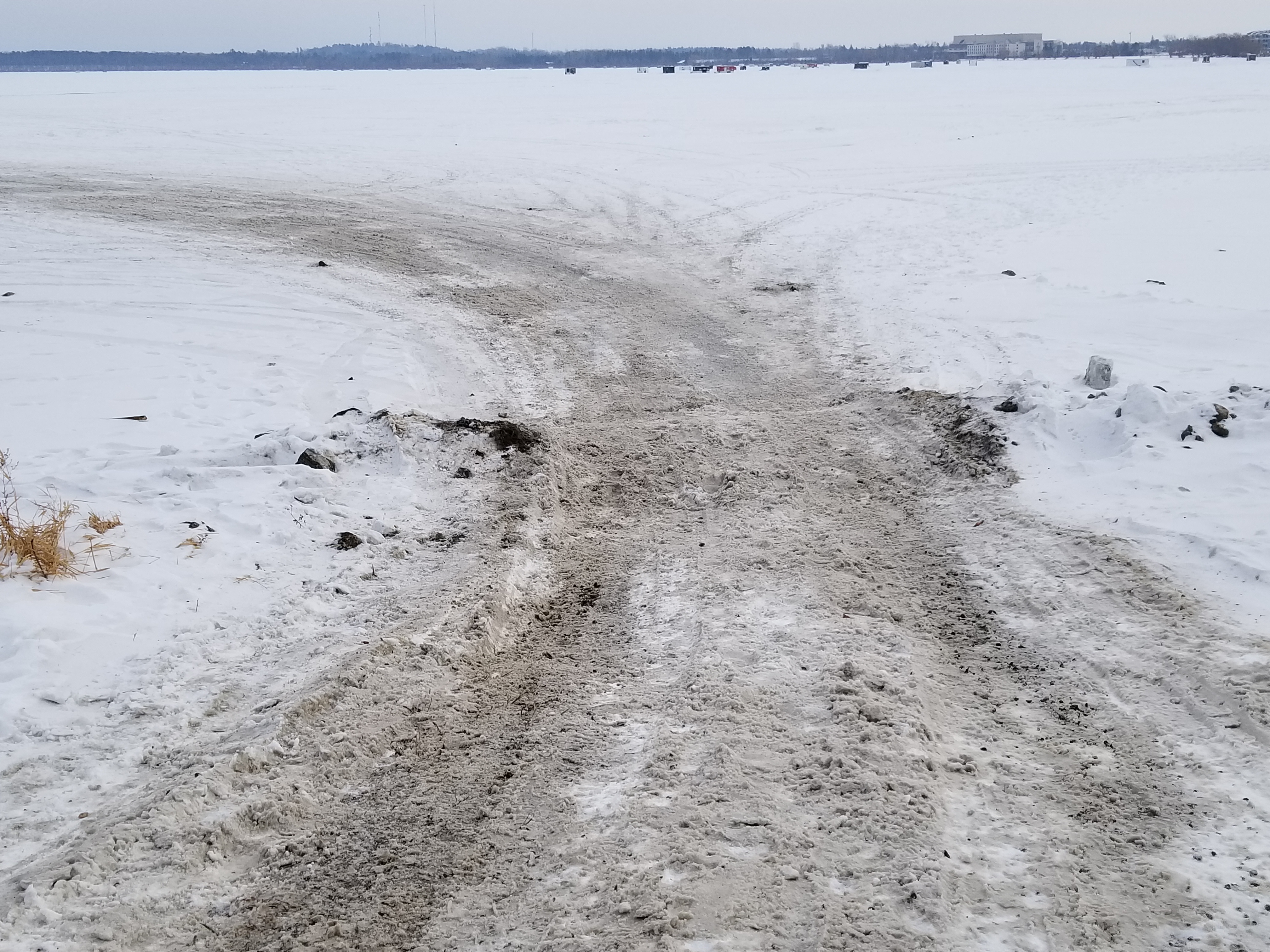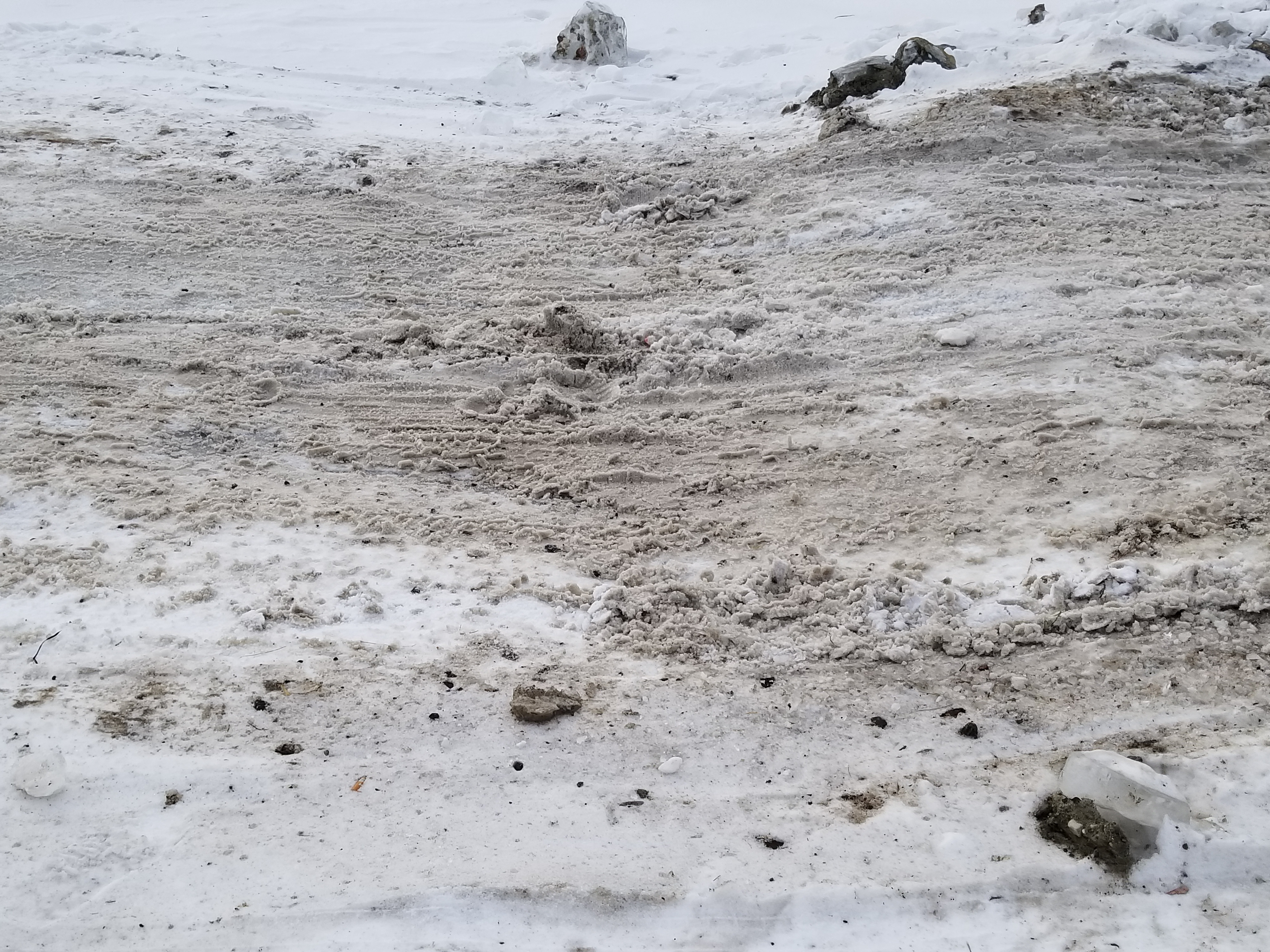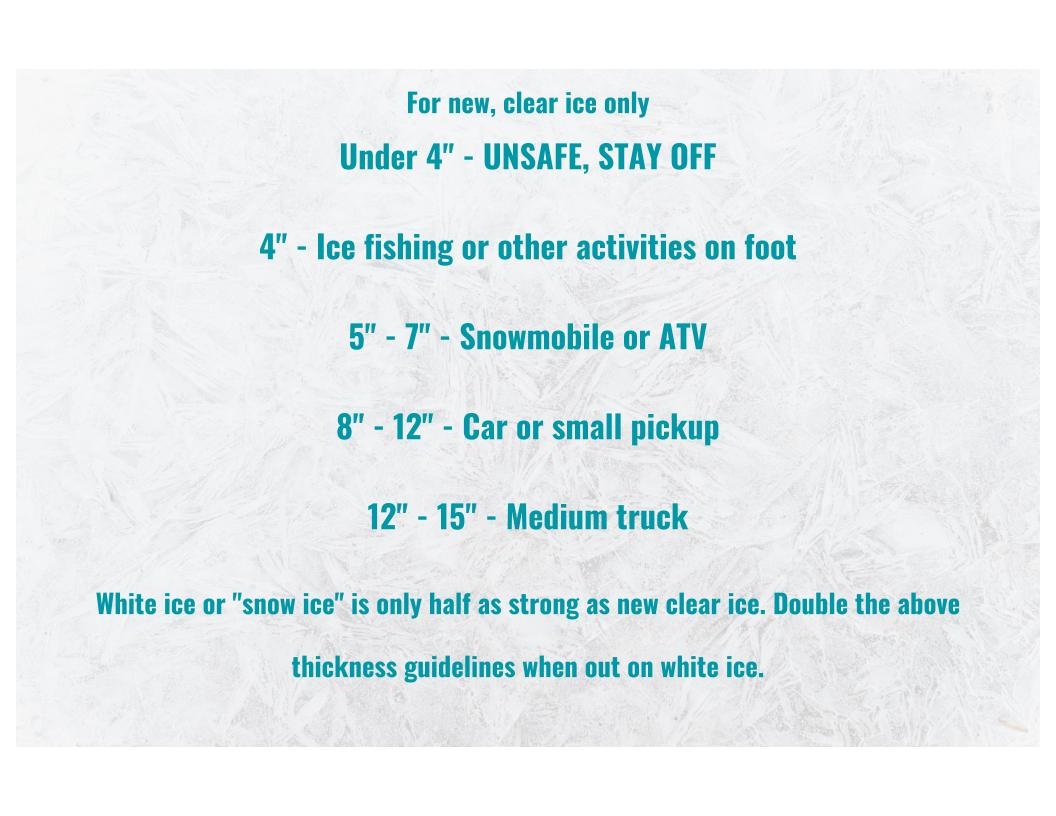Before you venture out on to this road….

This posts contains affiliate links.
It’s been a bad year here for lives lost when people fell through the ice. In Minnesota, so far this season alone, at least five people have died after falling through the ice. These are tragedies that should never have happened.
Every year cars, trucks, snowmobiles, and four-wheelers all go down.
The danger isn’t reserved for vehicles. People walking on the lake or river step on a thin spot and go through.
This post will talk about what to do if your vehicle goes through the ice.
Here is a link to my other post that talks about what to do if you fall through the ice while hiking or skiing.

People drive out onto the ice for many reasons. For some it’s for the fun of it, and for others it’s a short cut home. The most common reason, though, is ice fishing. In case anyone doesn’t know, ice fishing is a huge deal up here. If you don’t know about ice fishing, you either aren’t from the North, or you’ve never seen Grumpy Old Men.
Being out having a good time doesn’t mean that you can forget about ice safety. Thin ice is always a major concern, and please make sure the ice is safe before ever driving out on it.

In the terrifying event your vehicle does go through the ice, here is what to do:
Remove seat belt.
Open the window.
Climb out the window.
Sounds simple, but it’s not. Many variables are involved, and every situation is different.
If you have children with you, get them out first. Start with the oldest child so they can help the younger ones. If you are unable to climb out the window for some reason, having it open will let water in and normalize the pressure so the door can be opened. You will not be able to open the door until the water has filled the car and the pressure is equal on both sides. If possible, you want to get out before the vehicle sinks.
Do not take the time to call 911. Do that after you have escaped the vehicle. If you stop to call 911, you will drown. You only have about a minute and a half to save your life and the lives of your passengers or pets. Calling 911 will take too long, and rescuers will not arrive in time to save you. You will have to save yourself, so don’t waste time trying to find your phone and make any calls.

Don’t worry about grabbing anything unless it’s another person or a pet. No material thing is worth your life.
What if you go down and can’t open the windows or doors? Now is not the time to panic. Easier said than done, but you must keep your wits about you. Your life depends on it, and you have very little time. First, attempt to break the window. Do not attempt to break the windshield. Windshields are made from annealed glass, and they crack but don’t break easily. The side windows are made from tempered glass and will shatter completely. One caveat, though, is to break them on the edges not in the middle. The middle of the tempered windows is made to be strong and break resistant. Pound the edges of the glass with a hard object.
Having an auto emergency tool is a good idea. Keep it where you can easily grab it if and when you need it.
If you are unable to break the window, your last option is to wait for the vehicle to fill with water. As the water reaches your head, take the deepest breath you can and hold it. At that point, the pressure should be normalized enough so you can open the door. Get out fast and swim to the surface.
As a last ditch effort, try to push out the windshield or rear window with your feet or shoulder. Older vehicles have windshields installed with rubber gaskets, and you should be able to push it out. Newer vehicles are installed using adhesive and will be much more difficult to push out.

Different vehicles will float at different rates, from a few seconds to a couple of minutes. Most trucks and cars with the engine in front will sink nose first. If the water is more than fifteen feet deep, the vehicle may flip over and land on it’s roof, possibly crushing the window and door frames making it impossible to open them. This could also seriously injure you. Also silt or mud may prevent you from opening the doors, and you will be disoriented. Get out before the vehicle hits bottom!
Prevention is the best cure here. Take precautions, and don’t be careless. Before heading out on to the ice, have a plan and discuss it with every person in the vehicle. Make sure everyone knows what to do, and what their role will be.
If you are wearing life vests, take them off. They will not help you in this situation and may even hinder you.
Dogs and cats can be put through the windows and pushed up. They will swim.

Hypothermia is a real risk. The water is going to be very cold. You will experience thermal shock for a moment. The water will likely be dark and murky. The key is get out of the vehicle as fast as you can. Move up and away from it. If you are under the water, look for the light above you and aim for that. If you see bubbles floating up, follow them. Your next concern will be getting out of the water before hypothermia sets in.

Here is something to keep in mind when driving out on the ice. Just because you see someone else driving out there doesn’t mean it is safe. You might be thinking, “Hey if that big heavy truck made it with no problem then my little car is golden.” Not so! Behind another vehicle is the worst place to be. Each time a vehicle crosses it, the ice is weakened, especially if the vehicle is heavy. The first truck crosses without incident, and maybe the second, and even the third, but by the time your lighter car starts across, the ice could be severely compromised and down your car goes.

It’s a dangerous road. Before you hit it, know the risks, and know what to do to save yourself and your passengers.
Do not call 911.
Unbuckle seat belts.
Open windows.
Get the children out.
Climb out.
Swim.
A good practice when driving on ice is to keep the windows down. It is possible that they won’t open once the vehicle is submerged. You could also have the doors slightly open. That way you can jump out before the vehicle sinks. In addition, unbuckle the seat belts when you head on to the ice. Drive slowly and carefully. If you are driving recklessly and speeding, you are endangering yourself, your passengers, and anyone else who might be on the ice. Don’t be a dick.
Here are some essentials to help keep you safe on the ice:
Affiliate links
Auto Emergency Tool
Ice Picks
Ice Safety Kit
Ice Cleats
Ice Awls
Throw Bag
Ice Scraper
Below is a chart to use as a guideline for ice safety. Remember, however, every situation is different, and variables always exist.

That is all terrifying to me as I don’t swim😬
I have a robust fear of water ways
Good advice though
It’s terrifying to me too! I can’t imagine how awful it would be.